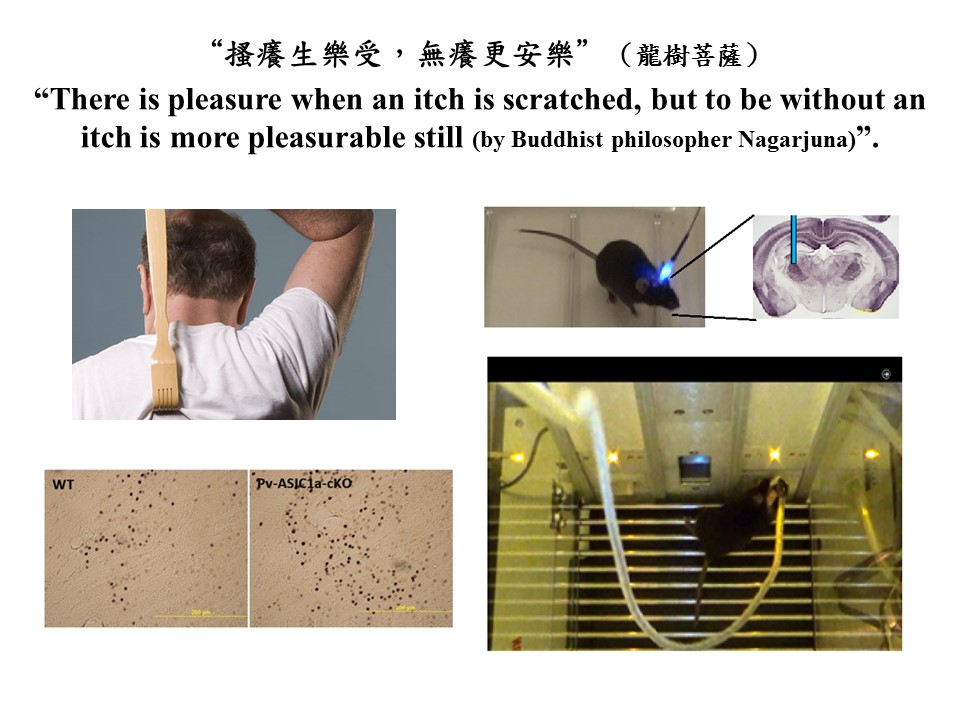以化學光遺傳小鼠模式探討止癢產生愉悅感的大腦神經基礎與酬賞機制神經迴路
Neurobiological basis of rewarding circuitry involved in itch relief-induced pleasure: a chemo-optogenetic approach
“搔癢生樂受,無癢更安樂”(龍樹菩薩)。我們為何會去抓癢?癢可以定義為一種不愉快的感覺會引發去抓癢的欲望。在日常生活經驗中抓癢可以止癢且得到快感。然而,仍有數以百萬的人深受無法根治的癢所苦。癢與止癢的關係是我們身體與大腦的秘密之一。迄今我們對於止癢及止癢得到的快感內在的分子與神經生物機制仍然所知不多。有趣的是這兩件事顯然是一體的兩面。由於相似的腦區可能牽涉了止癢的快感與得到酬賞,值得進一步去探究其內在神經生物機制。植基於台大心理系賴文崧教授與中研院生醫所陳志成研究員兩個團隊長期的合作與豐碩的成果,我們團隊結合了化學遺傳學與光遺傳學兩項特質的化學-光遺傳學進一步合作去探討止癢與決策所牽涉的酬賞迴路與機制。我們近期初步的研究結果揭示了止癢及止癢引發之酬賞效果的分子調控與神經迴路,特別是位在視丘 Parvalbumin 神經細胞的 Asic 1a。目前正增加樣本數及實驗來驗證我們的研究發現。
“There is pleasure when an itch is scratched, but to be without an itch is more pleasurable still (by Buddhist philosopher Nagarjuna)”. Why do we scratch an itch? Itch is defined as an unpleasant sensation that evokes a desire to scratch. Our daily experience tells that scratching relieves itch and is pleasurable. However, this may be not the case for the millions of people who suffer from intractable itch. The itch-scratch relationship is one of the mysteries in our bodies and brain. Up to date, little is known about the molecular and neurobiological basis of itch-relief and the following pleasure. Interestingly, itch and itch relief-induced pleasure appear to be two sides of the same coin. Giving the factors that similar brain circuits and areas might be involved in the processes of reward and pain relief, it is of great interest to investing neurobiological basis of rewarding circuitry involved in itch and itch relief-induced pleasure. Based on our long-term collaboration between Dr. Wen-Sung Lai at NTU and Dr. Chih-Cheng Chen at Academia Sinica, we move one step further to explore the rewarding circuitry involved in itch relief-induced pleasure and decision making from a chemo-optogenetic, a combination of both chemogenetics and optogenetics, approach. Our recent data reveal the molecular determinants and neurobiological basis that involved in anti-itch circuitry and itch relief-induced pleasure, especially for Asic1a in the parvalbumin neurons in the thalamus. Currently, we are trying to increase our sample size and to reassure our exciting findings.

